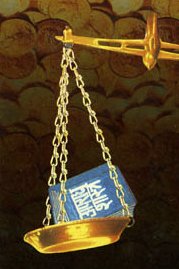Shrikarana, Śrīkaraṇa, Shri-karana: 10 definitions
Introduction:
Shrikarana means something in Hinduism, Sanskrit, the history of ancient India. If you want to know the exact meaning, history, etymology or English translation of this term then check out the descriptions on this page. Add your comment or reference to a book if you want to contribute to this summary article.
The Sanskrit term Śrīkaraṇa can be transliterated into English as Srikarana or Shrikarana, using the IAST transliteration scheme (?).
In Hinduism
Arthashastra (politics and welfare)
Source: Shodhganga: Kakati Ganapatideva and his times (artha)Śrīkaraṇa (श्रीकरण) or Śrīkaraṇam was another officer in the ministry of the king. Probably it refers to an officer of the finance department who looked after the accounts. Generally Karanam (karaṇa) corresponds to the village accountant. Śrīkarana appears to be the principal accountant or chief accountant of the treasury.

Arthashastra (अर्थशास्त्र, arthaśāstra) literature concerns itself with the teachings (shastra) of economic prosperity (artha) statecraft, politics and military tactics. The term arthashastra refers to both the name of these scientific teachings, as well as the name of a Sanskrit work included in such literature. This book was written (3rd century BCE) by by Kautilya, who flourished in the 4th century BCE.
India history and geography
Source: What is India: Inscriptions of the ŚilāhārasŚrīkaraṇa (secretariat) was a title used in the administration during the rule of the Śilāhāra dynasty (r. 765-1215 A.D.).—Prince Vikramāditya was appointed by his father Aparāditya I to govern Praṇālaka (capital of south Koṅkaṇ). He has his own ministers including the sāndhivigrahika (Ministers for Foreign Affairas). Later, when it ceased to be a separate rājya, a daṇḍādhipati named Suprayā was appointed to govern it. He had his own Śrī-karaṇa (Secretariat).
Source: Cologne Digital Sanskrit Dictionaries: Indian Epigraphical GlossaryŚrīkaraṇa.—(IE 8-3; EI 11, 21, 31; HD), the drafting of docu- ments; a scribe or scribe-accountant or secretary; the minister Hemādri was styled Sarva-śrīkaraṇa-prabhu (Hist. Dharm., Vol. I, p. 356, note 849). Cf. Karaṇa, Śrī-karaṇa-adhipa, śrīsrīkaraṇa. (EI 23, 29, 30), record office; the record department; the department responsible for drawing up documents. (EI 30; CII 4), record officer; the officer in charge of drawing documents. Cf. Puravuvari-śrīkaraṇa-nāyaka (EI 21), official designation. Cf. karaṇa (LP); explained as ‘the income department.’ Note: śrīkaraṇa is defined in the “Indian epigraphical glossary” as it can be found on ancient inscriptions commonly written in Sanskrit, Prakrit or Dravidian languages.

The history of India traces the identification of countries, villages, towns and other regions of India, as well as mythology, zoology, royal dynasties, rulers, tribes, local festivities and traditions and regional languages. Ancient India enjoyed religious freedom and encourages the path of Dharma, a concept common to Buddhism, Hinduism, and Jainism.
Languages of India and abroad
Sanskrit dictionary
Source: DDSA: The practical Sanskrit-English dictionaryŚrīkaraṇa (श्रीकरण).—a pen.
Derivable forms: śrīkaraṇam (श्रीकरणम्).
Śrīkaraṇa is a Sanskrit compound consisting of the terms śrī and karaṇa (करण).
Source: Cologne Digital Sanskrit Dictionaries: Shabda-Sagara Sanskrit-English DictionaryŚrīkaraṇa (श्रीकरण).—m.
(-ṇaḥ) A pen. E. śrī the word Shri, karaṇa implement of making.
Source: Cologne Digital Sanskrit Dictionaries: Cappeller Sanskrit-English DictionaryŚrīkaraṇa (श्रीकरण).—[adjective] causing welfare or splendour.
Source: Cologne Digital Sanskrit Dictionaries: Monier-Williams Sanskrit-English Dictionary1) Śrīkaraṇa (श्रीकरण):—[=śrī-karaṇa] [from śrī] mfn. causing glory or distinction, [Maitrāyaṇī-saṃhitā]
2) [v.s. ...] ‘making the word Śrī’, a pen, [cf. Lexicographers, esp. such as amarasiṃha, halāyudha, hemacandra, etc.]
3) [v.s. ...] Name of the capital of the Northern Kosalas (and residence of king Prasena-jit; it was in ruins when visited by Fa-Hian, not far from the modern Fyzabad), [Buddhist literature]
Source: Cologne Digital Sanskrit Dictionaries: Yates Sanskrit-English DictionaryŚrīkaraṇa (श्रीकरण):—[śrī-karaṇa] (ṇaḥ) 1. m. A pen.
[Sanskrit to German]
Sanskrit, also spelled संस्कृतम् (saṃskṛtam), is an ancient language of India commonly seen as the grandmother of the Indo-European language family (even English!). Closely allied with Prakrit and Pali, Sanskrit is more exhaustive in both grammar and terms and has the most extensive collection of literature in the world, greatly surpassing its sister-languages Greek and Latin.
Kannada-English dictionary
Source: Alar: Kannada-English corpusŚrīkaraṇa (ಶ್ರೀಕರಣ):—
1) [noun] a device used to write with; a pen.
2) [noun] an accounts officer or chief of accounts department (in a palace office).
Kannada is a Dravidian language (as opposed to the Indo-European language family) mainly spoken in the southwestern region of India.
See also (Relevant definitions)
Partial matches: Shri, Karana.
Starts with: Shrikarana-adhipa, Shrikarana-agrani, Shrikarana-prabhu, Shrikarana-viditam, Shrikaranabova, Shrikaranadhyaksha, Shrikaranadi.
Query error!
Full-text: Shrikaranabova, Shrikarana-agrani, Shrikarana-prabhu, Shrikarana-viditam, Pora-Shrikarana, Puro-shrikarana, Shrikarana-adhipa, Shrikaranadi, Shrikaranadhyaksha, Shrikaranin, Preggada, Mudra-vyapara, Vitthapaiya, Daddapaiya, Po, Karana.
Relevant text
Search found 3 books and stories containing Shrikarana, Śrīkaraṇa, Shri-karana, Śrī-karaṇa, Srikarana, Sri-karana; (plurals include: Shrikaranas, Śrīkaraṇas, karanas, karaṇas, Srikaranas). You can also click to the full overview containing English textual excerpts. Below are direct links for the most relevant articles:
Middle Chola Temples (by S. R. Balasubrahmanyam)
Temples in Kavantandalam < [Chapter IV - Temples of Rajendra I’s Time]
An introduction to abhinava chintamani an ayurveda treatise from orissa < [Volume 10 (issue 1), Jul-Sep 1990]
Manasara (English translation) (by Prasanna Kumar Acharya)